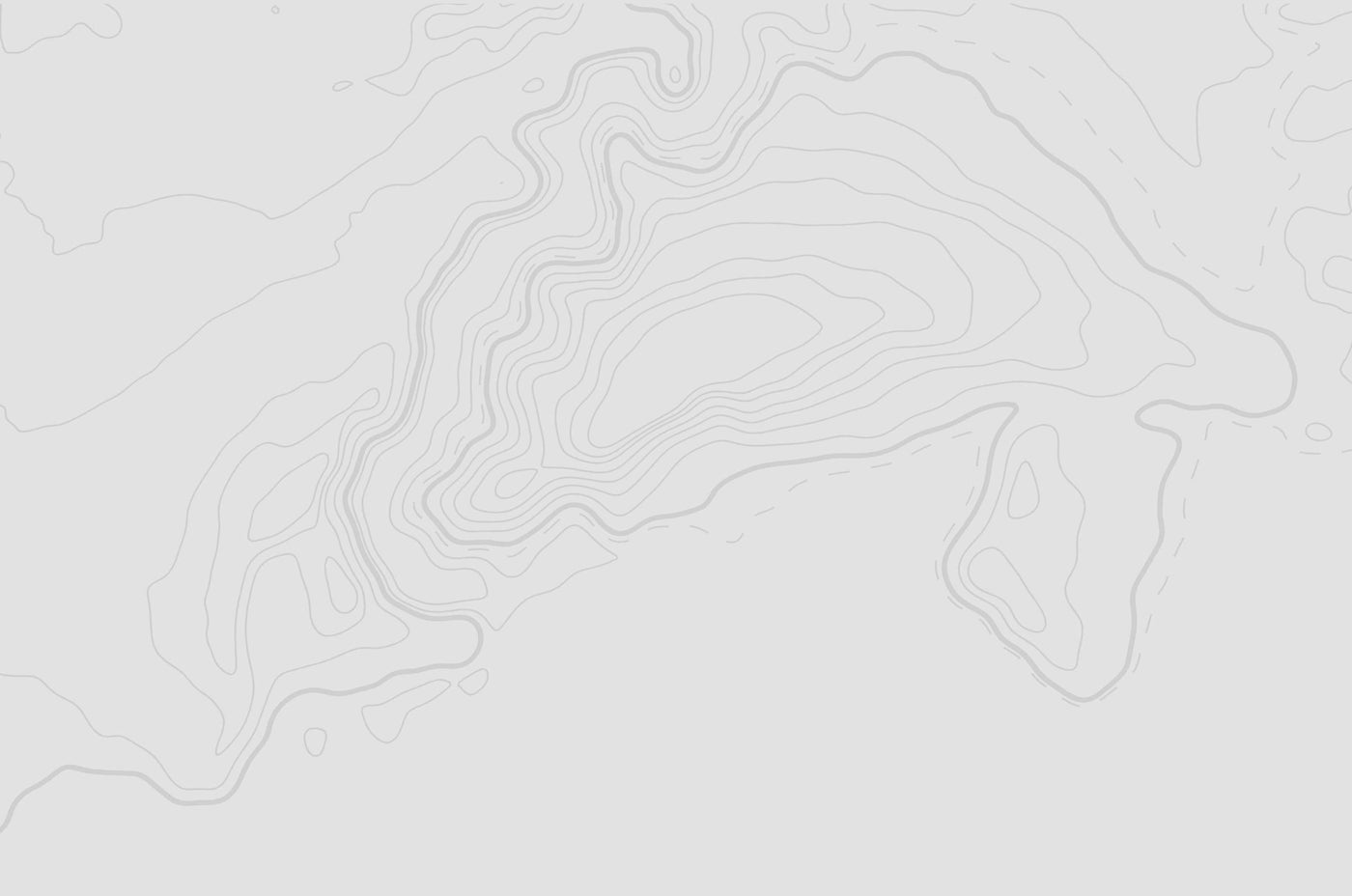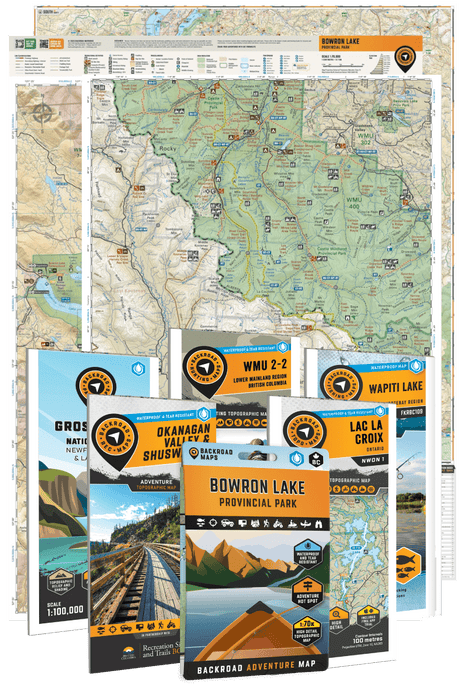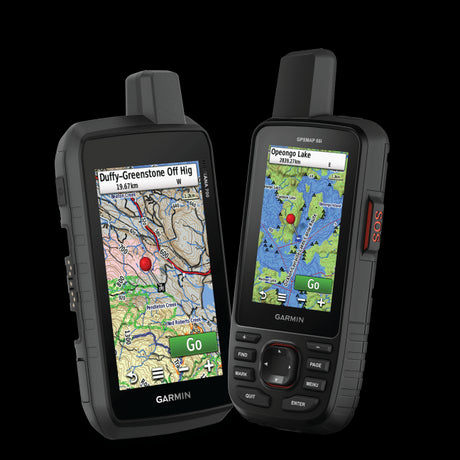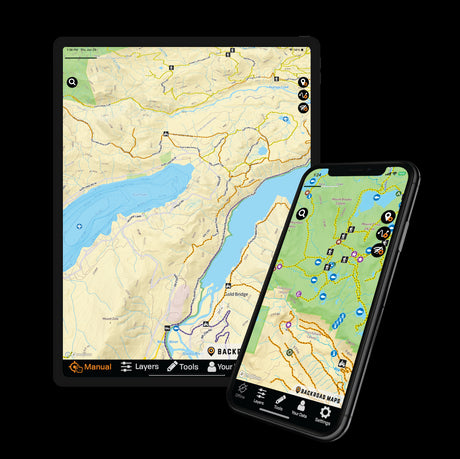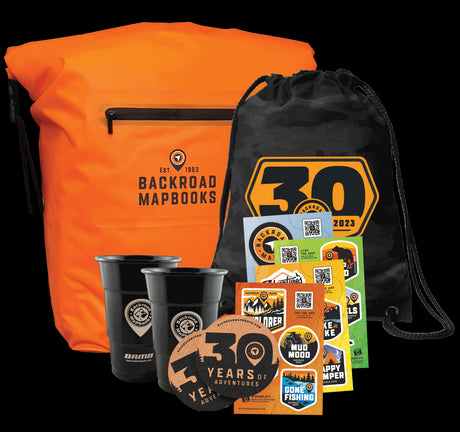The Crown Jewel of parks in Newfoundland, Gros Morne should be on the bucket list of anyone visiting this beautiful province. A UNESCO World Heritage Site since 1987, the rugged landscape found here was shaped by colliding continents and grinding glaciers millions of years ago. The park is home to spectacular wilderness scenery, with soaring fjords and majestic brooding mountains towering high above a diverse panorama of beaches, bogs, forests, and barren cliffs. Stretching inland from the Gulf of St. Lawrence through lowlands where waterways snake towards the Long Range Mountains and Tablelands, highways provide easy access to the 180,500 hectare (446,025 ac) park and its recreational activities.
We are pleased to announce our brand-new Gros Morne National Park topographic map, which highlights all the access roads, trails, and hot spots for hikers, anglers, paddlers, skiers, and backcountry enthusiasts. Showcasing frontcountry and wilderness campsites, boat launches, huts and cabins, picnic sites, snowmobile routes, viewpoints, waterfalls, and fishing hotspots, there is a lifetime of outdoor adventures to be found here.
Shown at a 1:100,000 scale, this map features our industry-leading topographic contours and relief shading, as well as roads, padding routes and trails, and snowmobile areas. Included on the map are Bakers Brook, Cow Head, Lobster Cove, Norris Point, Rocky Harbour, Trout River, Witondale, Woody Point, Bonne Bay, Lomond River, Long Range Mountains, Western Brook Pond, and more! No other map covers all of Gros Morne National Park with this level of recreation detail.
Adventure Opportunities Await
Regardless of your outdoor recreation preference, Gros Morne will not disappoint. A moderate 3 km (1.9 mi) trail leads from Route 430 to a dock where a two hour boat tour explores the 16 kilometre long Western Brook Pond. Those aboard find themselves floating between massive billion-year-old cliffs featuring waterfalls that cascade into the park’s largest lake from ponds atop the plateau. Those looking for even more adventure can book a professional guide and hike to the top of the gorge, where the reward is the iconic pond and fjord view featured in many tourism photos and magazines.
The Tablelands are another spectacular destination. Half a billion years in the making and formed deep in the middle layer of the Earth, the Tablelands were pushed to the surface as ancient continents collided and are one of only two sites on Earth where mantle rock lies exposed on the surface. Take a two hour guided tour or explore on your own. The moderate 4 km (2.5 mile) route begins 4 kilometres west of the Discovery Centre in Woody Point on Route 431 and ends at the glacially carved Winter House Brook Canyon. Visitors should be aware that beyond this point there are no markers along the trail, so those going further into the Tablelands require route finding and navigation skills.

Hikers have no shortage of possible options to strike out and explore the landscape. With nineteen trails ranging from an easy 700 metres to a challenging 17 km (10.5 mile) return hike, there is a trail for every fitness level. Highlights include the 10 km (6 mile) return Trout River Pond Trail which leads into a pristine part of the Tablelands, the 9 km (5.6 mile) return Baker’s Brook Falls Trail and the 17 km (10.5 mile) return trek to the highest point in the park, Gros Morne Mountain.
Kayakers will find a variety of great opportunities but will require strong paddling skills as wind, waves, water temperature, and changing weather all combine to make water travel challenging. It is said, there are rarely two calm days in a row, not even in the summer! Popular destinations include Trout River Pond, offering a spectacular volcanic coastline with 350 metre (1,150 foot) high cliffs, sea stacks and caves, and Inner Bonne Bay which is home to communities along the water’s edge and wooded coves providing landing beaches. In addition, Western Brook Pond is very scenic but is best left to experienced kayakers as strong winds can create large swells and breaking waves with few landing spots to be found amid the steep cliffs.

Anglers will find trout and char along with a salmon season which runs from June 15 to September 7. Many anglers head to the Lomond River, the East Branch Lomond River, and Deer Arm Brook. It is also possible to fish from wharves, with Woody Point, Norris Point and Rocky Harbour being popular locations. There are plenty of restrictions and closures and a Gros Morne National Park Fishing Permit is required, but catch limits of twelve fish or 2.2 kg (5 pounds) and possession limits of 24 fish or 4.4 kg (10 pounds) offer plenty of angling opportunities.
The park becomes a winter wonderland once the snow flies, and opportunities are endless for snowmobiling, snowshoeing, cross-country skiing, and backcountry touring. Popular routes include the 11 km (7 miles) of trails at the Visitor Centre, the 12 km (7.5 mile) Wigwam Pond to Stuckless Pond Trail, and the 7 km (4.3 miles) of trails at Shallow Bay. Backcountry ski and snowshoe enthusiasts will want to explore the 7 km (4.3 mile) return Burridges Gulch Route, the 8.5 km (5.3 mile) Badweather Pond to Southeast Pond Route, and the 9 km (5.6 mile) Burridges Gulch West Rim.
Where to Stay
Gros Morne National Park features five frontcountry campgrounds (Berry Hill, Green Point, Lomond, Shallow Bay, and Trout River), with a combined 234 campsites. While all campgrounds can accommodate tents, trailers, and RVs, only Berry Hill, Green Point and Shallow Bay have electrical hook-ups. Since Lomond, Green Point and Shallow Bay sit on or near the shoreline of either Bonnie Bay or the Gulf of St. Lawrence, they are popular locations. There are also rustic cabins, oTENTiks (located in four campgrounds) and primitive backcountry campsites spread along several hiking trails throughout the park. These include Stanleyville, Green Gardens, Snug Harbour, and Ferry Gulch. Visit parks.canada.ca for reservations. Many of the seaside communities including Cow Head, Glenburnie, Norris Point, Rocky Harbour, Trout River, and Woody Point also offer accommodations.

Getting Here
Gros Morne National Park is located on Newfoundland’s west coast, 30 minutes from Deer Lake airport and a four hour drive from the ferry at Port aux Basques. Anyone visiting the park requires a day permit and there are additional fees for certain programs, tours, and camping.

No matter which adventure you choose to partake in, the Gros Morne National Park Adventure Map is the perfect tool for trip-planning and carrying in your pocket, backpack, dry bag, or purse. Plan your next adventure and find your way to your destination with this brand-new map that is part of the lineup of our popular Parks & Destination Map series. And be sure to check out our brand new Newfoundland Backroad Mapbook and BRMB Maps App to aid in planning your next adventure in this beautiful park.

